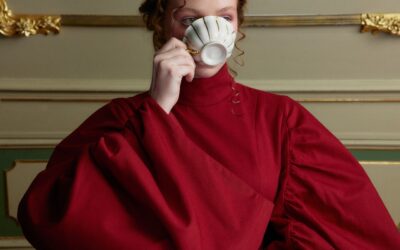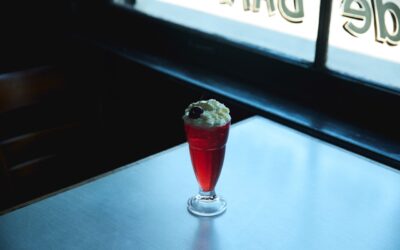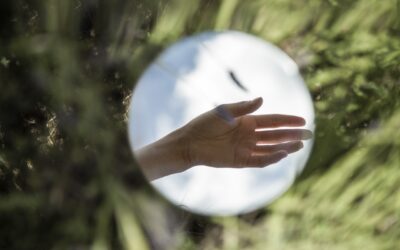The Secret to Making a Great Photograph
I have been making photographs for over 50 years now.
Literally half of a century.
And I have made some photographs that I like, and some photographs that other people like.
And I have made a lot of photographs I don’t like, and even more photographs that no one has ever seen.
Because they suck.
And that is OK with me too.
You have to make photos that suck in order to find the ones that don’t suck too bad.
Eventually, those that don’t suck too bad reveal one that actually doesn’t suck.
Get enough of those in the pipeline and you can end up with a handful that you like.
Wheat. Chaffe.
We know this.
And while the goal is to make more photographs that don’t suck versus the amount that do is one we all strive for, I fear the medium is prone to allowing us to snap off a lot of crap in searching for those elusive few that bring us some joy.
And joy is what I seek with photography these days.
I was once asked why I was a photographer. What was my motivation, they asked?
My only answer was that I make photographs because I have to. I am compelled.
It is part of my DNA.
I am as excited about doing it today as I was as a teenager in my dad’s darkroom.
I am also equally as frustrated, challenged, struggling, learning, failing, and just generally questioning of the art as I was with my first roll of film.
Yeah, I have answered a lot of the early questions and met many of the challenges.
But meeting the challenges just means there are more to come.
And the questions never cease.
Without questions, there can be no answers. No solutions. No values worth the artistic endeavor.
A Quora person asked me how did I ‘feel when I made a great photograph’?
My answer was as honest as I could possibly be; “I do not know. If I ever do make a great photograph, I will let you know.”
You see, “great” is something others bestow upon the work. It is not something I can attach to my own work.
It is an external evaluation of something that is created internally.
Now for sure, I have seen great photographs. Many great photographs.
Of course, there are great photographs out there.
And it is a privilege to be able to see them.
But that really has nothing to do with my work.
Or yours.
Because it is our work.
And the best way for us to do our work is to do it our way.
Not his way.
Not her way.
Not like some interweb hotshot.
Or the ‘top photographer’ in town.
Our way.
The only chance we ever have of having someone say “that photograph is great” about one of our pieces is to do it our way, with our deliberate choices. We OWN it.
About 10 or 12 years ago I happened to get involved with a bunch of Flickr people all flocking around something that apparently was very ‘new and exciting’ for them… “Off Camera Flash”.
I had always referred to that endeavor as “lighting” but who was I to go against that movement that swelled to even professional lighting equipment companies referring to a strobe on a stand as OCF?
Seriously?
And I started to dabble in the style which seemed to be focused mainly on lighting over the ambient by 1 – 3 stops.
I didn’t really like the style of work that was being created, but it was really popular. And really easy to make images that were in the popular vernacular. It was a ‘fad’ that soon ran its course, but it helped me refocus my energy on what I truly wanted to do.
I had started doing workshops in my area and it seemed that is all the photographers coming wanted to learn.
“Show us how to use speedlights outside” was the single most requested item at the workshops.
And I did of course.
And I shot that way for about 5 years until it sort of dawned on me.
I was not finding many images I liked because I was more focused on the technique than on the creation if images that felt true or authentic to me.
Before I go any further I want to clarify that I am NOT against the technique in even one tiny way. Other photographers employ the same tools and techniques and create some super good work.
Even great work.
But I am talking about MY work here… and it seemed as though I was losing track of what I wanted to do with my own photography and sacrificing my vision in order to use a technique that was “cool”.
Techniques are not your vision.
Techniques are not your style.
Techniques are not your art.
Techniques are not your statement.
It is simply a technique. A tool.
A lever in the cogs that make the work we love… and should be used ONLY to advance our vision.
After 6 or 7 years I realized I hadn’t been shooting much of anything that mattered.
The only images I liked were the ones where I would abandon the ‘hip’ and ‘cool’ techniques and return to what I believed was my way of shooting.
My light. My way.
The stuff that worked for ME.
(And yes, there are times when I use a strobe in such a manner… but it does not define me. It is the appropriate tool to create the work that DOES define me.)
There will always be techniques and tools in this art, an art that demands the use of technology to create. And they will always be a fascination to those of us who use them daily.
And whether it is an old beat-up film camera or a shiny new mirrorless wizbang, it is still a tool to be used in creating our vision.
Our own vision.
Our vision must stand beside it, not be entrenched within it.
So here is the secret to creating a great photograph.
Make it YOUR photograph.
Put trends and “cool” up for deliberate inspection in relation to what YOU want to say.
Make sure your vision is not cloned from someone who may be popular because of THEIR vision. Their vision will never be yours, and yours will always be second rate to the original
Choose the tools that are right for you, not because they are popular or all the ‘rockstars’ use them.
Work as hard as you can to find your own voice… and go with your heart… your ‘artistic heart’ and do not let the ‘popular kids’ deter you from the work you want to do.
And after you make a lot of YOUR photographs, cull out all the ones that suck leaving those that don’t suck you can have a chance at that coveted title we all love.
“Hey, that’s a great photograph…”
If you say so.
Thanks.
Recent Journal Posts
Stop Being the Best Photographer No One Knows About
Stop Being the Best Photographer No One Knows AboutThere was a time — maybe 10, 15 years ago — when having a solid portfolio and being a decent human being got you work. Word-of-mouth. A few referrals. Maybe a feature in PDN if you were lucky. That time is over, gone,...
Stop Fearing Failure: Be Terrified of Regret.
Stop Fearing Failure - Be Terrified of Regret.Failure Sucks Less Than Regret. There’s a quote I heard recently that nailed a truth I’ve been preaching for years:"Stop fearing failure, but be terrified of regret." Many of the photographers I work with—especially those...
CREATE A “DREAM FIFTY” FOR MAXIMUM IMPACT
DO YOU HAVE A DREAM 50?Create a “Dream Fifty” for maximum clarity and impact. Dream-50 If your marketing plan is sorta like “post some stuff and hope for the best”, well… You’re not alone. But you’re also not in control. Drumroll please! Enter the Dream 50 List — a...



